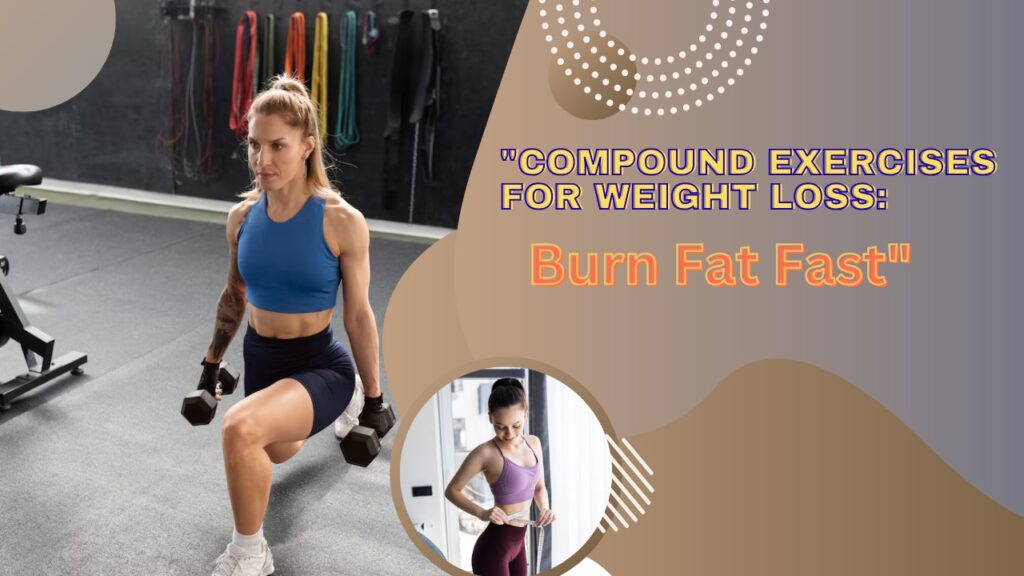compound exercises for weight loss have gained significant attention due to their efficiency and effectiveness. Unlike isolation exercises that focus on a single muscle group, compound exercises work multiple muscles simultaneously, allowing you to burn more calories in less time. By engaging larger muscle groups, these exercises stimulate your metabolism and help create the calorie deficit necessary for weight loss.
The science behind compound exercises for weight loss is rooted in their ability to increase energy expenditure while improving strength and endurance. Movements like squats, deadlifts, and bench presses activate several muscles at once, promoting fat loss while toning your body. This combination of strength building and calorie burning makes compound exercises a cornerstone of any effective weight loss program.
To maximize results with compound exercises for weight loss, consistency and proper form are crucial. Incorporate progressive overload, maintain a balanced diet, and mix in cardiovascular training. Additionally, focus on full-body routines, prioritize recovery, and track your progress to stay motivated and achieve sustainable weight loss results.

What Are Compound Exercises?
Compound exercises for weight loss are movements that engage two or more major muscle groups simultaneously. Unlike isolation exercises, which focus on a single muscle, compound exercises recruit multiple muscles, joints, and often require coordination and balance. Examples include squats, deadlifts, bench presses, and pull-ups, all of which work several muscles together to create a more efficient and dynamic workout.
The primary advantage of compound exercises for weight loss is their ability to burn more calories in less time. Because these exercises require more energy to perform, your body’s metabolism is boosted both during and after the workout. This makes them especially effective for individuals looking to lose fat while building lean muscle, as the combination of strength and calorie expenditure accelerates weight loss.
Compound exercises for weight loss also improve functional strength, coordination, and overall fitness. By focusing on movements that mimic real-life activities, you enhance your body’s efficiency, reduce the risk of injury, and achieve a more toned and balanced physique.
Compound exercises are movements that involve more than one joint and muscle group simultaneously. These exercises mimic natural body movements and often require coordination, balance, and strength. For example, a squat engages the quadriceps, hamstrings, glutes, and core, while a push-up works the chest, shoulders, triceps, and core.
Benefits of Compound Exercises
Increased Calorie Burn: Engaging multiple muscle groups simultaneously demands more energy, which leads to higher calorie expenditure compared to isolation exercises.
Improved Functional Strength: These exercises mimic real-life movements, improving overall body strength and coordination.
Enhanced Muscle Growth: Activating multiple muscles stimulates hormonal responses like testosterone and growth hormone release, aiding in muscle growth and fat loss.
Time Efficiency: Compound exercises target several muscles at once, making your workouts shorter yet highly effective.
Better Cardiovascular Fitness: High-intensity compound movements can elevate heart rate, promoting cardiovascular health alongside fat loss.
How Compound Exercises Promote Weight Loss
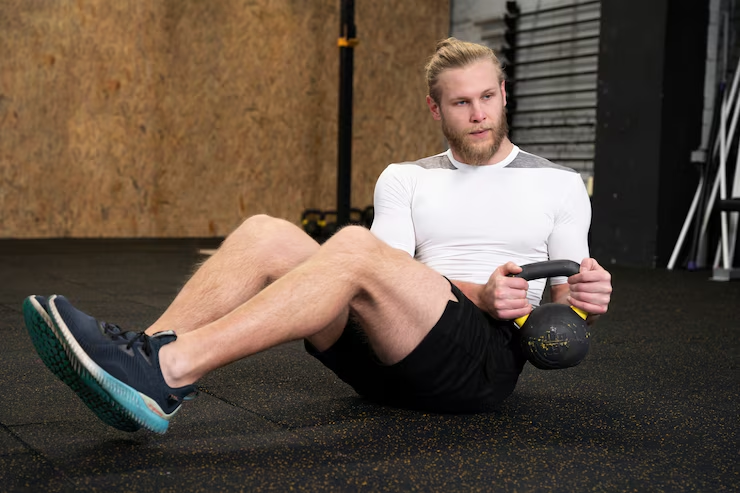
Compound exercises for weight loss are highly effective because they engage multiple muscle groups at once, increasing the total energy your body expends during a workout. Movements like squats, deadlifts, and push-ups require several muscles to work together, which burns more calories compared to isolation exercises. This higher calorie burn helps create the calorie deficit necessary for weight loss.
Another way compound exercises for weight loss support fat loss is by boosting metabolism. Performing these multi-joint movements stimulates muscle growth, and more muscle mass naturally increases your resting metabolic rate. This means your body continues to burn calories even after your workout, enhancing long-term weight loss results.
Additionally, compound exercises for weight loss improve overall strength, endurance, and functional fitness. By training multiple muscles simultaneously, you build a balanced, toned physique while reducing the risk of injury. Combining these exercises with a healthy diet and consistent workout routine maximizes fat loss efficiently and sustainably.
Weight loss fundamentally relies on a calorie deficit — burning more calories than you consume. Compound exercises accelerate this process in several ways:
Higher Energy Expenditure: More muscles working simultaneously mean higher metabolic demand.
Afterburn Effect (EPOC): Intense compound exercises increase Excess Post-Exercise Oxygen Consumption (EPOC), meaning you continue burning calories even after your workout.
Muscle Preservation: During weight loss, maintaining muscle mass is crucial. Compound movements engage multiple muscles, helping retain lean mass while shedding fat.
Hormonal Benefits: They stimulate fat-burning hormones, improving your body’s ability to utilize stored fat for energy.
Compound Exercises for Weight Loss
Squats
Muscles Targeted: Quadriceps, hamstrings, glutes, calves, core
Benefits: Squats are fundamental for building lower body strength and stimulating large muscle groups for maximum calorie burn.
Tip: Keep your back straight, feet shoulder-width apart, and lower until thighs are parallel to the floor.
Deadlifts
Muscles Targeted: Hamstrings, glutes, lower back, traps, core
Benefits: Deadlifts are excellent for full-body strength and posterior chain development.
Tip: Maintain a neutral spine and engage your core to avoid injury.
Push-Ups
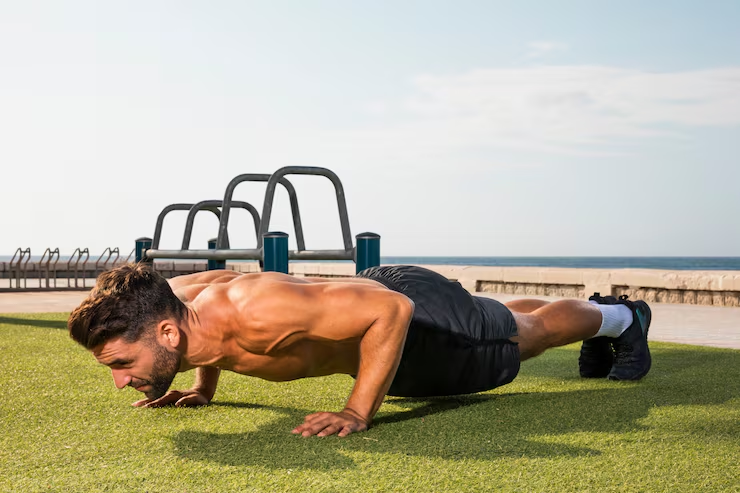
Muscles Targeted: Chest, shoulders, triceps, core
Benefits: Classic upper-body exercise that also engages the core for stability.
Tip: Keep elbows at 45 degrees from your torso and lower yourself until your chest almost touches the floor.
Pull-Ups
Muscles Targeted: Lats, biceps, shoulders, core
Benefits: Pull-ups build upper body strength and improve posture.
Tip: Use controlled movements and avoid swinging your body.
Lunges
Muscles Targeted: Quadriceps, hamstrings, glutes, calves
Benefits: Lunges enhance balance, coordination, and unilateral leg strength.
Tip: Step forward, keeping your torso upright, and lower until both knees form 90-degree angles.
Bench Press
Muscles Targeted: Chest, shoulders, triceps, core
Benefits: Builds upper body strength while engaging the core for stability.
Tip: Ensure proper grip width and controlled descent to prevent shoulder strain.
Rows (Barbell or Dumbbell)

Muscles Targeted: Upper back, lats, biceps, core
Benefits: Strengthens the posterior chain and improves posture, essential for balanced fitness.
Tip: Keep your back straight and pull the weight toward your abdomen, squeezing shoulder blades together.
Burpees
Muscles Targeted: Full body – chest, arms, legs, core
Benefits: Burpees are high-intensity cardio and strength combined, making them excellent for fat loss.
Tip: Perform in a controlled, rhythmic manner to maintain form and avoid injury.
Tips for Using Compound Exercises for Weight Loss
Focus on Form First
When performing compound exercises for weight loss, proper form should always be your top priority. These exercises involve multiple joints and muscle groups, so incorrect technique can lead to injuries and reduce effectiveness. Taking the time to learn the correct posture, alignment, and movement patterns ensures you target the right muscles and maximize calorie burn safely.
Starting with lighter weights or bodyweight versions of compound exercises for weight loss allows you to master the movements before increasing intensity. For example, practicing air squats, push-ups, or hip hinges helps you build a strong foundation. Maintaining proper form not only prevents strain on your joints but also ensures that your muscles are working efficiently, which directly contributes to better fat loss results.
Focusing on form first also enhances long-term progress with compound exercises for weight loss. As your technique improves, you can gradually add resistance or complexity, ensuring continual challenge, consistent muscle engagement, and sustainable weight loss without risking setbacks from injury.
Proper technique prevents injuries and ensures maximum muscle engagement. Never rush through reps.
Incorporate Progressive Overload
To maximize results with compound exercises for weight loss, it’s essential to incorporate progressive overload into your routine. Progressive overload involves gradually increasing the stress placed on your muscles, whether through heavier weights, more repetitions, or added sets. This continuous challenge stimulates muscle growth and boosts metabolism, both of which are crucial for effective fat loss.
Using progressive overload with compound exercises for weight loss ensures that your body doesn’t plateau. For example, adding a few extra pounds to your squat or performing an additional push-up each week forces your muscles to adapt and grow stronger. Stronger muscles burn more calories at rest, helping you achieve a greater overall calorie deficit and faster weight loss.
Additionally, progressive overload enhances strength, endurance, and functional fitness with compound exercises for weight loss. By consistently challenging your body while maintaining proper form, you achieve sustainable results, improved performance, and a toned, leaner physique over time.
Combine Strength and Cardio
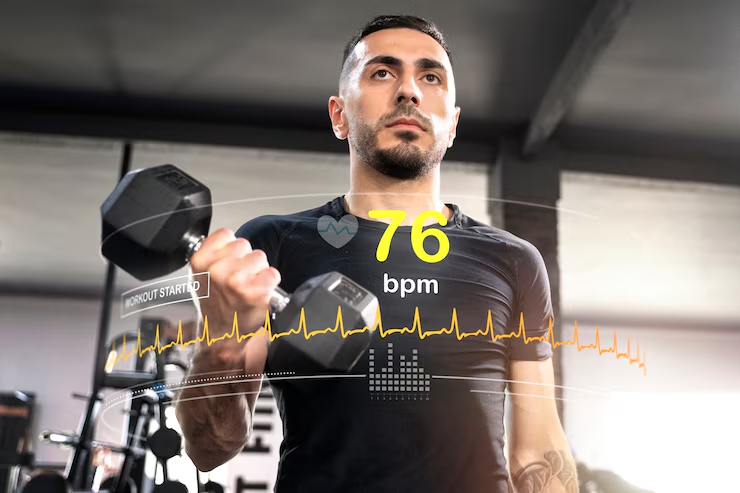
To achieve optimal results with compound exercises for weight loss, combining strength training with cardiovascular exercise is highly effective. Compound movements like squats, deadlifts, and bench presses build muscle while also engaging multiple joints, which increases calorie expenditure. Pairing these exercises with cardio sessions, such as running, cycling, or HIIT, amplifies fat-burning and accelerates weight loss.
The synergy of strength and cardio in compound exercises for weight loss offers multiple benefits. Strength training preserves and builds lean muscle mass, which boosts metabolism, while cardio enhances heart health and burns additional calories. Together, they create a calorie deficit while improving overall fitness, endurance, and body composition.
Additionally, combining strength and cardio with compound exercises for weight loss keeps workouts dynamic and prevents boredom. Alternating between resistance movements and cardio bursts maximizes energy output, promotes consistent fat loss, and helps you maintain a lean, toned physique over time.
Pair compound exercises with high-intensity interval training (HIIT) for optimal fat burning.
Include Multi-Joint Movements in Every Workout
A key strategy for effective fat loss is to include compound exercises for weight loss that involve multi-joint movements in every workout. These exercises, such as squats, lunges, deadlifts, and bench presses, work several muscle groups at once, increasing calorie burn and improving overall strength. By engaging more muscles simultaneously, multi-joint movements make your workouts more efficient and effective.
Multi-joint compound exercises for weight loss also help boost metabolism and build functional strength. Since these exercises require coordination and balance, they challenge your body in a natural way, enhancing performance in everyday activities. Additionally, the increased energy demand during these movements accelerates fat loss while promoting lean muscle development.
Consistently including multi-joint compound exercises for weight loss in your routine ensures steady progress and prevents workout plateaus. By focusing on movements that target multiple muscle groups, you optimize calorie burn, strengthen your entire body, and achieve a leaner, more toned physique efficiently and sustainably.
Base your routines on squats, deadlifts, presses, and rows to target multiple muscles efficiently.
Use Supersets or Circuits
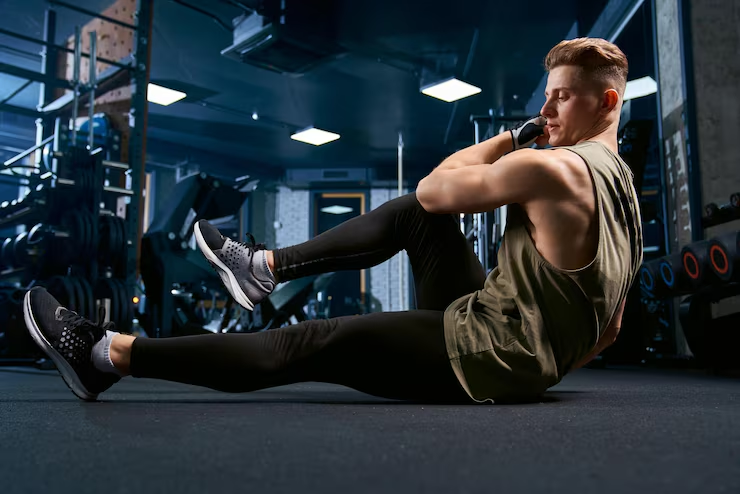
One effective way to enhance compound exercises for weight loss is by incorporating supersets or circuit training into your routine. Supersets involve performing two exercises back-to-back with minimal rest, while circuits combine several exercises in sequence. Both methods keep your heart rate elevated, increasing calorie burn and improving cardiovascular fitness.
Supersets and circuits with compound exercises for weight loss not only accelerate fat loss but also save time. By combining movements like squats with push-ups or lunges with pull-ups, you target multiple muscle groups efficiently. This approach maximizes energy expenditure, stimulates metabolism, and ensures that your workouts remain challenging and engaging.
Additionally, using supersets or circuits with compound exercises for weight loss enhances muscular endurance, strength, and overall conditioning. By maintaining a continuous flow of movement, you achieve higher calorie burn, improve workout intensity, and support sustainable weight loss while building a strong, toned physique.
Performing exercises back-to-back keeps heart rate elevated, maximizing calorie burn.
Prioritize Large Muscle Groups
To maximize results with compound exercises for weight loss, it’s important to prioritize large muscle groups in your workouts. Exercises that target muscles such as the quads, glutes, chest, and back engage more fibers, leading to greater calorie burn. Movements like squats, deadlifts, bench presses, and pull-ups are highly effective because they work multiple joints and large muscle groups simultaneously.
Focusing on large muscle groups with compound exercises for weight loss not only increases energy expenditure during workouts but also boosts metabolism over time. Stronger, bigger muscles require more calories to maintain, which helps create a calorie deficit and supports sustainable fat loss. Training large muscles first ensures you have enough energy and proper form to perform these demanding exercises safely and effectively.
Additionally, prioritizing large muscle groups in your compound exercises for weight loss routine enhances overall strength, balance, and functional fitness. This strategy allows you to burn more calories, improve body composition, and achieve a leaner, more toned physique efficiently.
Exercises like squats and deadlifts activate big muscles, boosting metabolism and fat loss.
Maintain a Healthy Diet

While compound exercises for weight loss are highly effective at burning calories and building muscle, maintaining a healthy diet is equally important for achieving your weight loss goals. Eating nutrient-dense foods, controlling portion sizes, and balancing macronutrients ensures that your body has the fuel it needs for high-intensity workouts while supporting fat loss.
A well-balanced diet complements compound exercises for weight loss by providing protein to repair and build muscle, carbohydrates for energy, and healthy fats for overall health. Proper nutrition also helps regulate hormones, control appetite, and maintain energy levels throughout the day, making it easier to stay consistent with your exercise routine.
Combining compound exercises for weight loss with a healthy diet creates a powerful synergy for fat loss and overall wellness. By fueling your body properly and focusing on whole, unprocessed foods, you maximize workout results, accelerate calorie burn, and achieve a leaner, stronger, and healthier physique sustainably.
Exercise alone isn’t enough. Focus on protein-rich meals and a calorie deficit for sustainable results.
Consistency Over Intensity
When it comes to compound exercises for weight loss, consistency is far more important than occasional high-intensity sessions. Regular workouts, even at moderate intensity, ensure continuous calorie burn, muscle growth, and metabolic improvement. Skipping sessions or pushing too hard sporadically can lead to burnout or injury, undermining long-term progress.
Maintaining a steady routine with compound exercises for weight loss allows your body to adapt gradually, building strength and endurance over time. By focusing on consistent effort rather than extreme intensity, you create sustainable habits that support ongoing fat loss and overall fitness. Small, incremental progress in weight, repetitions, or complexity adds up over weeks and months, yielding significant results without unnecessary strain.
Consistency with compound exercises for weight loss also fosters discipline and motivation. By making exercise a regular part of your lifestyle, you not only burn calories efficiently but also improve cardiovascular health, strengthen muscles, and achieve a leaner, toned physique that lasts beyond short-term efforts.
Regular workouts, even if moderate in intensity, yield better long-term weight loss than sporadic high-intensity sessions.
Structuring a Compound Exercise Workout for Weight Loss
| Day | Focus | Exercise | Sets × Reps | Notes |
|---|---|---|---|---|
| Day 1 | Full Body Strength | Squats | 4×12 | Target quads, glutes, hamstrings |
| Bench Press | 4×10 | Chest, shoulders, triceps | ||
| Bent-Over Rows | 4×10 | Back and biceps | ||
| Push-Ups | 3×15 | Chest, shoulders, triceps | ||
| Day 2 | HIIT + Bodyweight Compound Movements | Burpees | 3×12 | Full-body cardio and strength |
| Jumping Lunges | 3×15 | Legs and glutes | ||
| Mountain Climbers | 3×30 sec | Core and cardio | ||
| Pull-Ups | 3×8 | Back and biceps | ||
| Day 3 | Rest or Active Recovery | Light Cardio, Yoga, or Stretching | – | Focus on recovery |
| Day 4 | Lower Body Focus | Deadlifts | 4×10 | Hamstrings, glutes, back |
| Lunges | 3×12 per leg | Quads and glutes | ||
| Step-Ups | 3×15 per leg | Glutes, quads, balance | ||
| Day 5 | Upper Body Focus | Bench Press | 4×10 | Chest, shoulders, triceps |
| Overhead Press | 4×10 | Shoulders and arms | ||
| Dumbbell Rows | 3×12 per arm | Back and biceps | ||
| Push-Ups | 3×15 | Chest, shoulders, triceps | ||
| Day 6 | Full Body Conditioning | Circuit: Squats, Burpees, Lunges, Push-Ups | 3 rounds | Full-body calorie burn |
| HIIT | 20 min | High-intensity cardio | ||
| Day 7 | Rest | Stretching and Mobility Exercises | – | Recovery and flexibility |
Conclusion

Compound exercises for weight loss are one of the most efficient and effective ways to burn calories, build muscle, and improve overall fitness. By engaging multiple muscle groups simultaneously, these exercises maximize calorie expenditure and boost metabolism, making them ideal for anyone looking to shed fat and tone their body. From squats and deadlifts to bench presses and push-ups, compound movements deliver results faster than isolation exercises alone.
In addition to calorie burn, compound exercises for weight loss enhance strength, endurance, and functional fitness. They improve coordination and balance while targeting large muscle groups, which supports long-term fat loss and overall health. Pairing these exercises with progressive overload, supersets, or circuit training can further increase intensity and effectiveness, helping you reach your weight loss goals efficiently.
Consistency, proper form, and a balanced diet are essential when performing compound exercises for weight loss. By following a structured routine and maintaining healthy lifestyle habits, you can achieve a leaner, stronger, and more toned physique sustainably while enjoying lasting results.
FAQs
Q1. What are compound exercises for weight loss?
Compound exercises are movements that engage multiple muscle groups and joints simultaneously, such as squats, deadlifts, push-ups, and pull-ups. They increase calorie burn, boost metabolism, and build functional strength, making them highly effective for weight loss.
Q2. How often should I do compound exercises for weight loss?
For optimal results, aim for 3–5 sessions per week, combining full-body, upper-body, and lower-body workouts. It’s important to include rest or active recovery days to allow muscles to repair and prevent injury.
Q3. Can I lose weight using only compound exercises?
Yes, compound exercises can significantly aid weight loss, but pairing them with a balanced, calorie-controlled diet and cardiovascular activity maximizes fat loss and overall fitness.
Q4. Should I use weights or bodyweight for compound exercises?
Both are effective. Beginners can start with bodyweight exercises, while adding weights or resistance over time increases intensity, builds muscle, and enhances calorie burn.
Q5. How do I avoid injury while performing compound exercises for weight loss?
Focus on proper form, start with manageable weights or bodyweight, warm up before workouts, and progress gradually. Listening to your body and resting when needed is key to safe, sustainable results.
